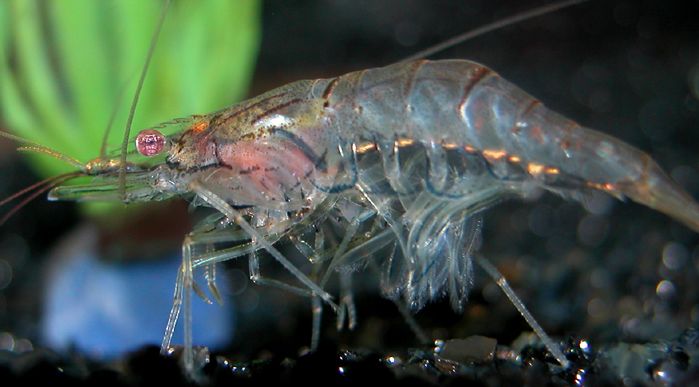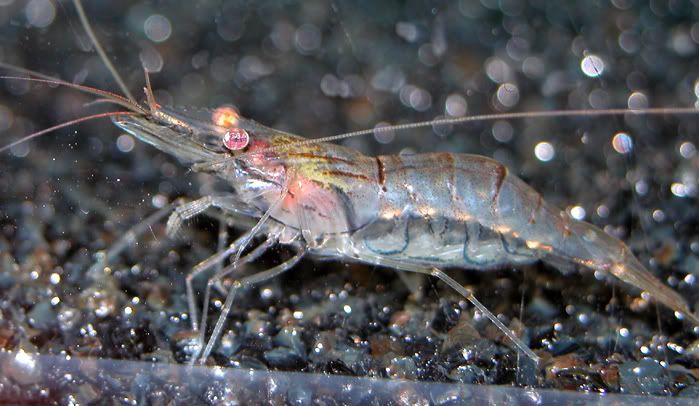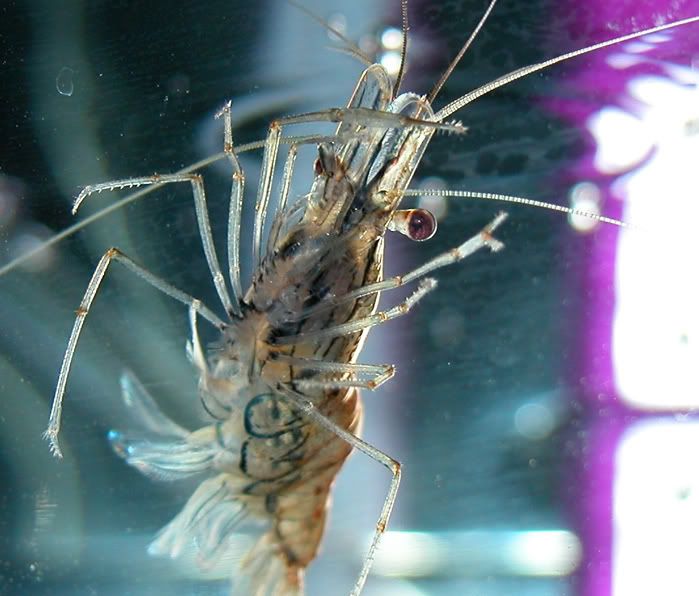I have two "*Ghost?" and two Bamboo shrimp. I'm slowly working towards Red Cherries after I get another tank... Is that how it goes? You start with one kind of shrimp and the next thing you know you want to collect them all for observation?
As most new people do, I'm searching for that "one answer" that brought me here in the first place. The answer I'm searching for, I almost found from this thread: viewtopic.php?t=81 That shrimp looks exactly like mine. Unfortunately, at the time, there was not an answer as to what kind of shrimp that is. Is there one now?
Basically, I have two shrimps that were sold to me as "grass shrimp" and told they were "friendly" to fish. And furthermore, it's the fish (depending on what kind I have) to watch out for. I originally presumed they were Ghost shrimp but my guys are predatory. They amazingly caught and ate three of my smaller fish - one White Cloud and two Zebra Danios <<<something I never dreamed could be possible! before I realized they are not "peaceful."
They are about 1.5 inches long.

Sorry for the use of flash but I don't have enough light due to black gravel and only 10 watt lights. They're mostly translucent with a light brown/tan tint. They also have dark line markings and dark eyes.

They are a very lively, fun shrimp to watch. I enjoy giving them personal attention via food handouts using the blunt end of wooden BBQ skewers as chopsticks to hold their food (they'll come and get it) during feeding time.

Any input as to what they are is much appreciated as I don't want to continue calling them Ghost shrimp if in fact they are not. I'm presuming now they are some type of Macrobrachium?
Thanks! Blue


